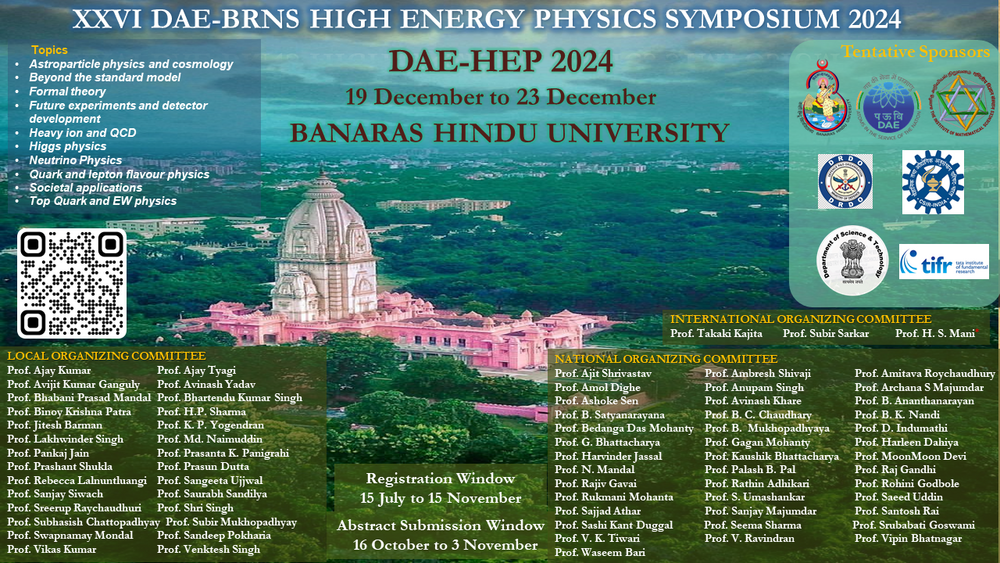Speaker
Description
High-energy proton-proton (pp) collisions at the Large Hadron Collider (LHC) produce a variety of subatomic particles. Charged particle multiplicity (Nch) is a key observable in hadronic collisions, offering insight into particle production mechanisms and the hadronization process. Partonic interactions such as Multi-Parton Interactions (MPI), Initial State Radiation (ISR), Final State Radiation (FSR), and Color Reconnection (CR), collectively define the intricate structure of hadronic collisions. MPI contributes through multiple simultaneous parton-parton scatterings within a single pp collision, while ISR and FSR represent Quantum Chromodynamic (QCD) emissions occurring before and after the primary hard scatter, respectively. CR impacts hadronization by altering color flow connections between partons, affecting the fragmentation process and thus modifying particle multiplicity. The study of Koba-Nielsen-Olesen (KNO) scaling reveals universal patterns in particle multiplicity distributions, advancing our understanding of particle production scalability across various collision energies. In our study, we simulated pp collisions using the Monte Carlo (MC) event generator PYTHIA8 with the default Monash tune. We analysed the influence of MPI, ISR, FSR, and CR on the Nch spectra, conducting a comparative study of charged particle multiplicity for each interaction type. Additionally, Nch spectra were examined across different pseudorapidity regions (∣η∣<0.5,1,1.5,2 and 2.5) and at pp collision energies of √s = 0.9, 2.36, 7, 8, 13, and 14 TeV. KNO scaling was performed at these energies and within these pseudorapidity regions. Finally, we validated the multiplicity distribution by comparing data from the Compact Muon Solenoid (CMS) experiment at the LHC with the generated MC results.
References:
1.Charged-particle multiplicity in proton–proton collisions, Jan Fiete Grosse-Oetringhaus and Klaus Reygers 2010 J. Phys. G: Nucl. Part. Phys. 37 083001.
2.A comprehensive guide to the physics and usage of PYTHIA 8.3, C. Bierlich et al, SciPost Phys. Codebases 8-r8.3 (2022), [arXiv:2203.11601 [hep-ph]].
3. Z. Koba, H. B. Nielsen and P. Olesen, Scaling of multiplicity distributions in high-energy hadron collisions, Nucl. Phys. B 40 (1972) 317.
4. CMS Collaboration, Charged particle multiplicities in pp interactions at √s = 0.9, 2.36, and 7 TeV. J. High Energy Phys. 2011, 01, 079.
| Field of contribution | Phenomenology |
|---|

